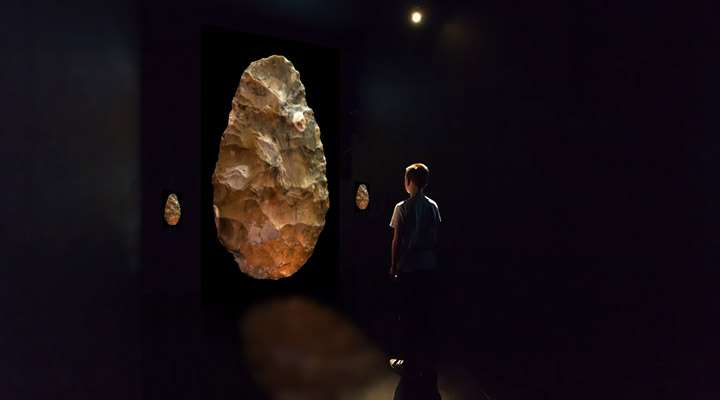
MANHATTAN — The past lives in a new multimedia installation at Kansas State University's Marianna Kistler Beach Museum of Art that lets visitors examine some of the earliest tools crafted by humans.
"45 Paleolithic Handaxes From Transfigurations: Reanimating the Past" by artist David Lebrun opens Sept. 21 and runs through July 16, 2022, in the Beach Museum's Ruth Ann Wefald Gallery. An online version will be available at beach.k-state.edu. The installation is a collaboration of the museum with K-State Information Technology Services and Cytek Media.
"Though the actual stone artifacts from archaeological sites throughout Europe will not be onsite, they will be accessible in a powerful way through a combination of high-resolution photography, animation, use of scale and an evocative sound score," said Linda Duke, Beach Museum director.
Lebrun has spent decades working with archaeologists and anthropologists to identify and photograph iconic, human-made objects from four regions: Mesoamerica, Europe, the Mediterranean and South Asia.
The artist and his team also have designed an exploration station to accompany the installation. It will provide an array of information about each of the 45 stone tools featured. Visitors can enjoy the aesthetic beauty of the objects and then learn archaeologists’ theories about how they were made and used.
Before the pandemic hit, the Beach Museum of Art originally planned for a larger presentation of Lebrun's work. Duke said this exhibition and another one set for the 2022-2023 season that will represent ancient Mesoamerica will provide an introduction to the artist's long-term project, "Transfigurations: Reanimating the Past."
The museum, 701 Beach Lane, is on the southeast corner of the K-State campus. The museum is open 10 a.m. to 5 p.m. on Tuesdays, Wednesdays, and Fridays; 10 a.m. to 8 p.m. on Thursdays; and 11 a.m. to 4 p.m. on Saturdays. Free parking is available adjacent to the building.
To catch a livestream event or view exhibitions online, go to beach.k-state.edu, or watch videos of the museum's special programs and events on its YouTube channel, beach.k-state.edu/videos. For a calendar of events in the Art in Motion annual program series, visit beach.k-state.edu/calendar.





